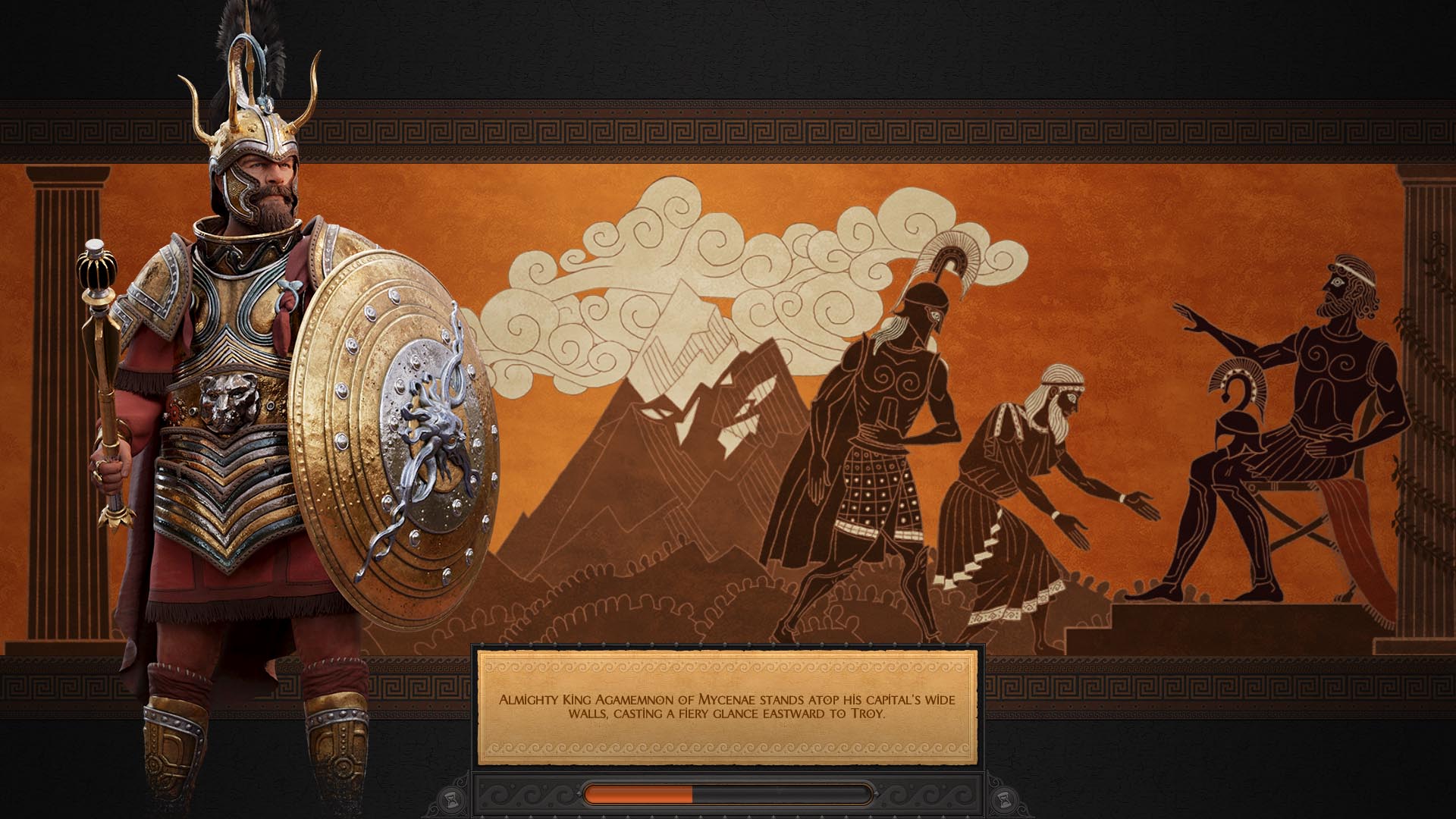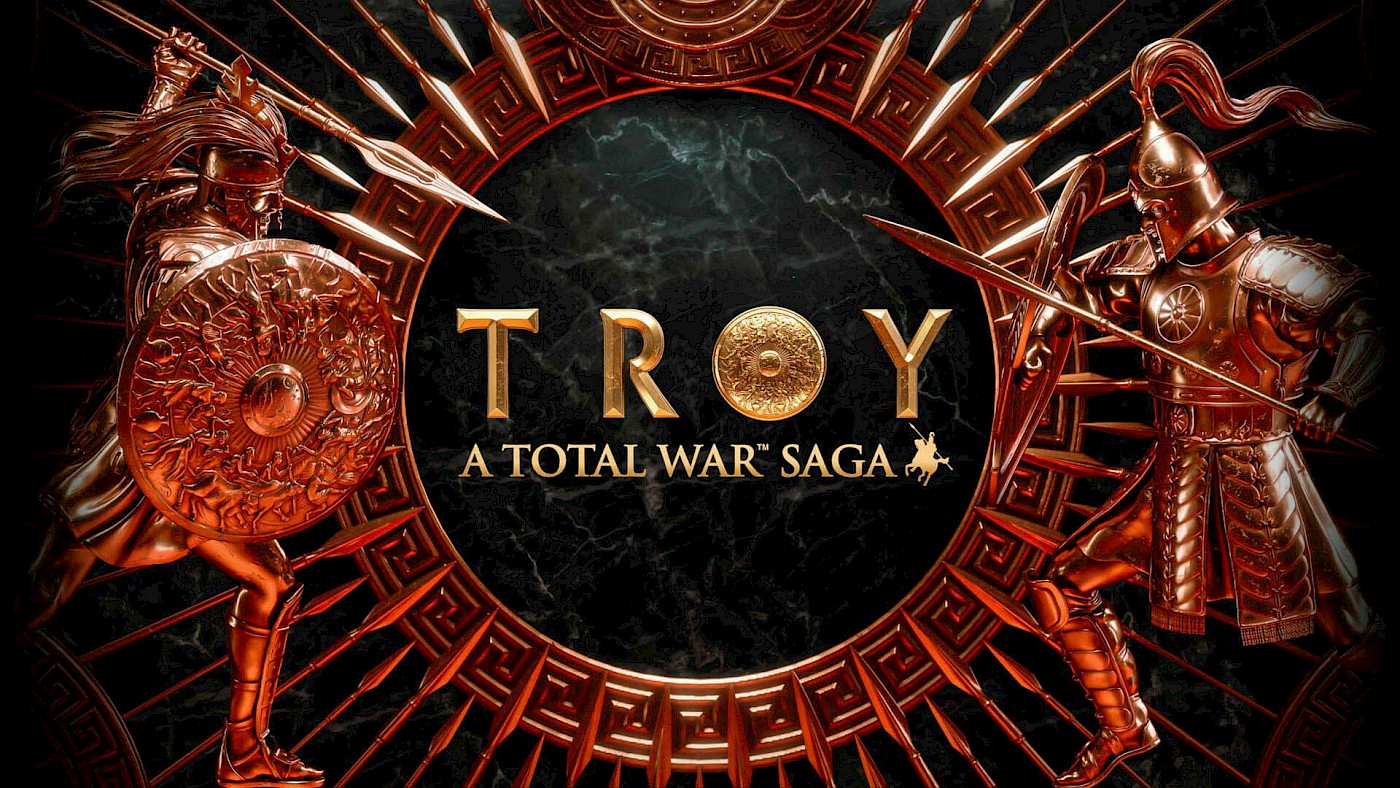Let me start by saying that this is definitely not a review. I haven’t played enough of A Total War Saga: Troy (2020) to give you an honest appraisal about the game itself, or even if it’s worth your time. There are two main reasons for why I’m done with the game and have no desire to continue playing it.
The first reason is that I have come to realize that I don’t care much about the Total War games any more. In case you haven’t played any of the previous entries in the series, Total War games are large-scale or “grand” strategy games where you spend most of your time playing in a turn-based layer similar to Civilization, where you build up cities to recruit bigger and better armies to conquer more cities so you can build even bigger and even better armies.
When your army meets a rival army, you can choose to control the army directly on the battlefield. The battles themselves are real-time, with you deploying your troops before hitting the attack button, and then issuing commands to your troops in an attempt to kill off enough of the enemy so that they break and rout.
The first game in the series was Shogun: Total War. Released in 2000 and set during Japan’s Sengoku period, the strategic layer was a simple map, sort of like the boardgame Risk, and the real-time battles used sprites in order to render hundreds of troops. It was a fairly simple yet elegant game, with evocative art and music. I loved this game.
With Rome: Total War (2004), the series introduced a much more detailed turn-based strategic layer, but I never felt it added anything worthwhile to the formula. The strategic layer was too complex for what it needed to be, and as developer Creative Assembly pumped out one game after another, the real-time battles lost whatever magic they may have had back in Shogun: Total War. The only game in the series that came close to the original, as far as I am concerned, was the Shogun sequel from 2011, which is arguably the best of the more recent crop of Total War games.

The second reason is that the theme of the game – the Trojan War – is a poor fit with the Total War formula. The Trojan War is a story where a more or less united Greek force fights the Trojans and their allies. But in the game, you start out as either a Greek or Trojan leader, and you have to conquer or ally a sufficiently large number of rivals to be strong enough to win the game. The game focuses not so much on the war, but on preparing for the fight. In many ways, the Trojan War is simply a prop for this game (see also Joshua Hall’s relatively recent Wolfson Ancient Warfare Wednesday talk).
Much to my own surprise, I have found this terribly dull. That is no doubt a failing on my part, but I get bored going through the motions, amassing a force large enough to capture this or that city so that I can accumulate the necessary resources to recruit a better army that will take me to the next step, and so on. If this feels reductive, it probably is. It’s also the reason why this emphatically is not a review of the game, but instead some general thoughts and commentary.
What I do like about the game is it’s presentation. It looks beautiful. I like the art style that they picked for the interface and the game’s fog-of-war, inspired as it is by Greek black-figure pottery of the sixth century BC. If I were a developer working on a game about the Trojan War, I’d frame it as a story being told in the (later) sixth century BC, and I’d use an art style inspired by black-figure pottery. That way, you avoid having to make any bold claims about historicity. It worked for Apotheon.
Unfortunately, Creative Assembly has opted for a Mycenaean interpretation of the Trojan War. As I have stated many times by now, the Homeric epics contain little to no useful information about the Bronze Age. Still, as you move around on the map, the black-figure fog lifts and the world of the “Mycenaean” Bronze Age emerges.
Or at least, this is the idea. As I’ve written in an earlier article, the armour of these supposed Mycenaeans is all over the place, and very little of it seems to be based on evidence from the Bronze Age. Most of it is simply fantastical, sometimes vaguely inspired by descriptions in the Homeric epics, and much is anachronistic stuff from later periods, like the pseudo-Argive shields carried by most of the game’s heroes.
Other elements in the game aren’t much better. The supposedly Mycenaean cities on the map all have multiple towers. In reality, no Mycenaean citadels ever featured towers (with one possible exception). It’s a minor point, perhaps, analogous to the anachronistic catapults depicted atop certain walls in Assassin’s Creed: Odyssey. There also seems to have been little attempt on the developers’ side to model the cities after what they actually look like. Furthermore, there are wide open spaces in most cities only so that armies can easily manoeuvre inside them.

Of course, like Ubisoft’s Assassin’s Creed: Odyssey, SEGA’s Troy is a game first and foremost. You might not be bothered about anachronisms in a game inspired by something that is a myth. Still, it would have been better if Creative Assembly had not pretended to make a historical game in the first place and opted simply to go for fantasy instead.
Furthermore, where Odyssey is focused, Troy appears muddled. Odyssey knows exactly what it wants to be: an open-world playground set in something inspired by Classical Greece. Squint and you think you’re there. Troy, on the other hand, tries to be a Total War game, mixing its grand strategy with the story of the Trojan War in a way that never really gels.
As Rob Zacny puts it in his review, Troy “is about the wrong war”:
Troy doesn’t really seem like it has a historically plausible vision of warfare in the late Bronze Age when the war supposedly happened, nor the Archaic Age from which the myths themselves largely date. It’s a mashup of out of context historical inspiration and literary reference, which ends up being pretty damned fun because of it. But the more I play Troy, the more I start to think that Creative Assembly’s Sofia studio ended up making a game about a completely different Greek war: the Peloponnesian Wars between Athens and Sparta that occurred from 460 to 404 BCE.
The game certainly does try to evoke the Trojan War. You can play as either the Greeks or the Trojans, assuming the role of one of the principle heroes from Homer’s Iliad. You can be Agamemnon, Achilles, Odysseus, Menelaus, Hector, Paris, Aeneas, or Sarpedon. Each of them has unique traits and mechanics. Agamemnon, for example, can demand resources from his allies and appoint heroes to positions within the Mycenaean hierarchy.
Each of the heroes also gains experience points and can be outfitted with equipment that is given as a reward for being victorious in battle and for completing missions. There are even two different ways to win the game: the default Total War victory as well as a “Homeric victory”. In Agamemnon’s case, the latter consists of completing 13 epic missions, destroying or subjugating a certain number of rivals, maintaining strong influence in a set number of settlements, and holding the city of Troy. If that sounds like a lot of work, it is.
The game also introduces a much-touted “barter system”. Instead of just having one resource (e.g. coins), you now have to manage five different resources: food, wood, stone, bronze, and gold. You use these to recruit troops and build structures. If you’ve played any strategy game with multiple resources (e.g. Age of Empires), this is very familiar territory, but it’s new to the Total War series.
Practically, the barter system is just that: you can trade (barter) e.g. wood for gold, or bronze for food with other faction leaders in the game. While it’s laudable to try and reflect a system where coinage is lacking, in practice it seems very much like all you’re doing is juggling five different forms of currency. Shortly after release, the barter system was essentially broken, allowing players to take advantage of AI players to amass prodigious amounts of resources, but this seems to have been patched in the meantime.
Finally, a barter system between leaders that relies entirely on raw materials does not seem much in keeping with the Homeric epics. In the epic world, men value specific treasures, often because of the biographies attached to them, and reckon the value of things in oxen, with the exception of gold (for which they use talents, an ancient unit of weight used since the Bronze Age). Although lumps of otherwise unworked metal are sometimes handed out as prizes.

A Total War Saga: Troy has been rather a disappointment to me. I had been looking forward to the game for obvious reasons, but I just haven’t found it engrossing. The historical inaccuracies with regards to the Late Bronze Age and the patently ridiculous claim on the part of the developers about revealing the “truth behind the legend” have certainly not helped matters.
Rather than continue to try and somehow find the fun in the experience, I think it’s best to uninstall the game and move on. We’re spoilt for choice when it comes to games, no matter whether it’s digital games or good old board- and card games. But considering my interests, I would have been remiss if I hadn’t at least tried A Total War Saga: Troy. Now I can say that I did, and it’s not for me.
You may have an entirely different experience playing the game. Maybe you’ll like it. The game is currently available only on the Epic Games store, but is slated for release on Steam in 2021. I managed to snag a copy for free when it was released in August and I would definitely suggest you wait for a sale.
